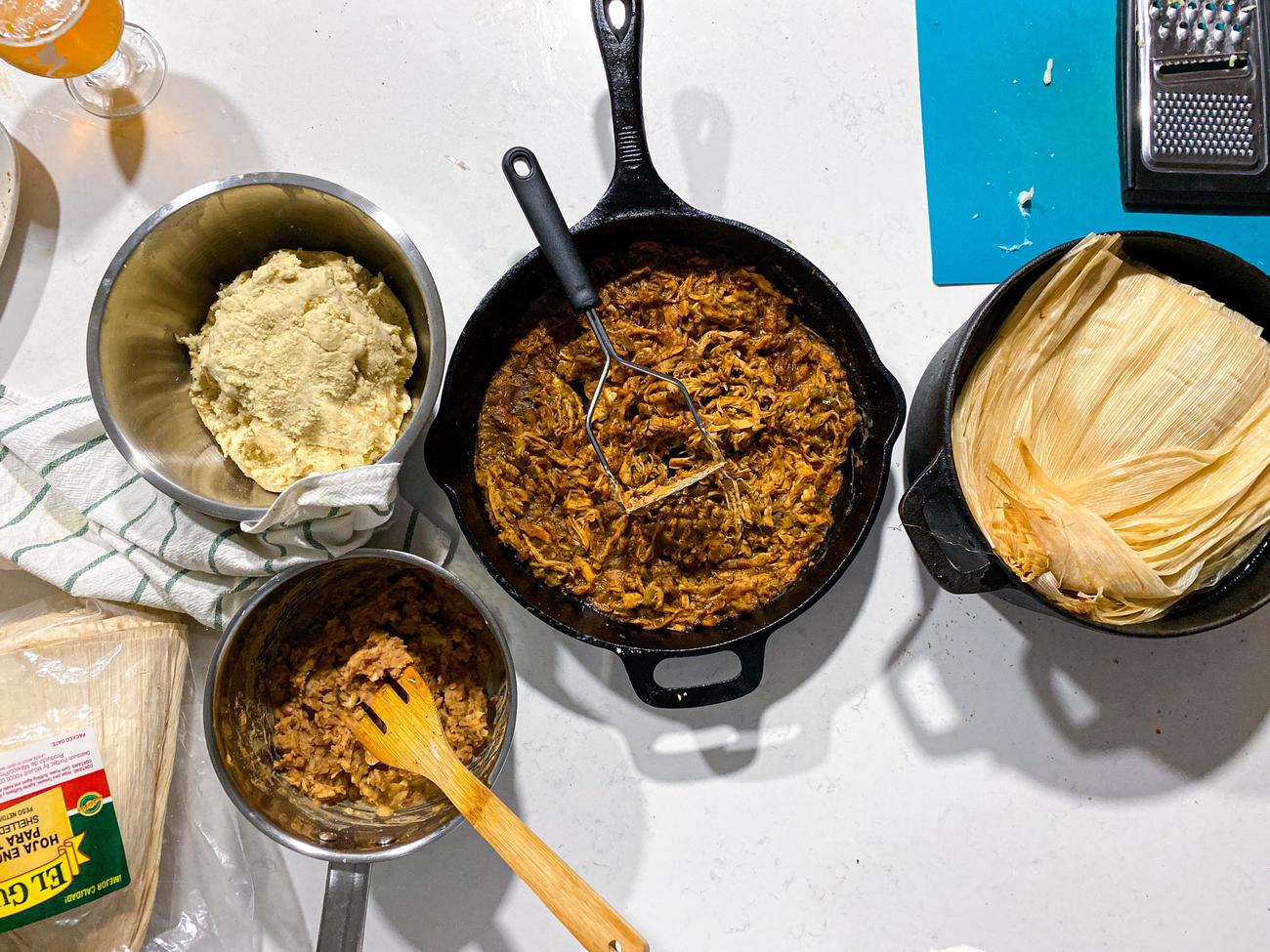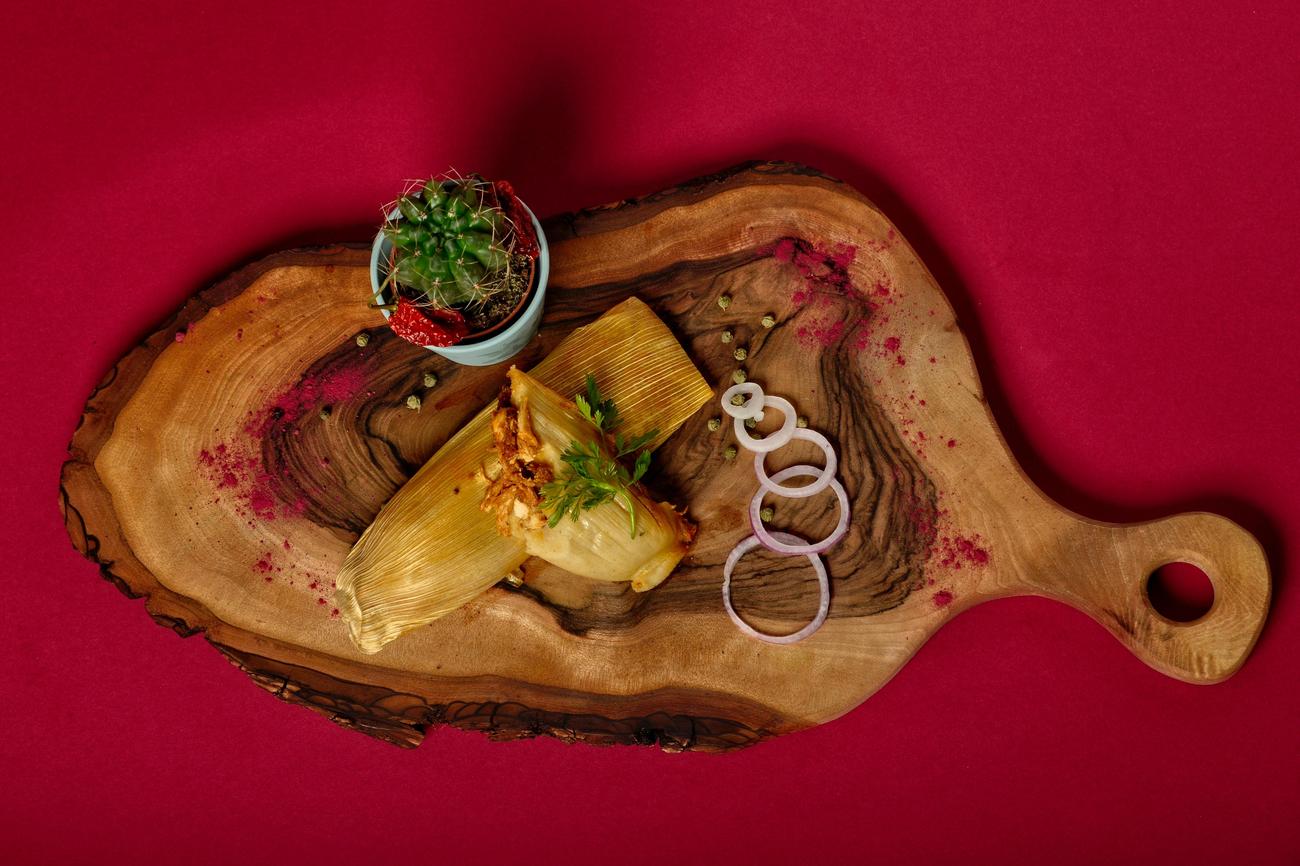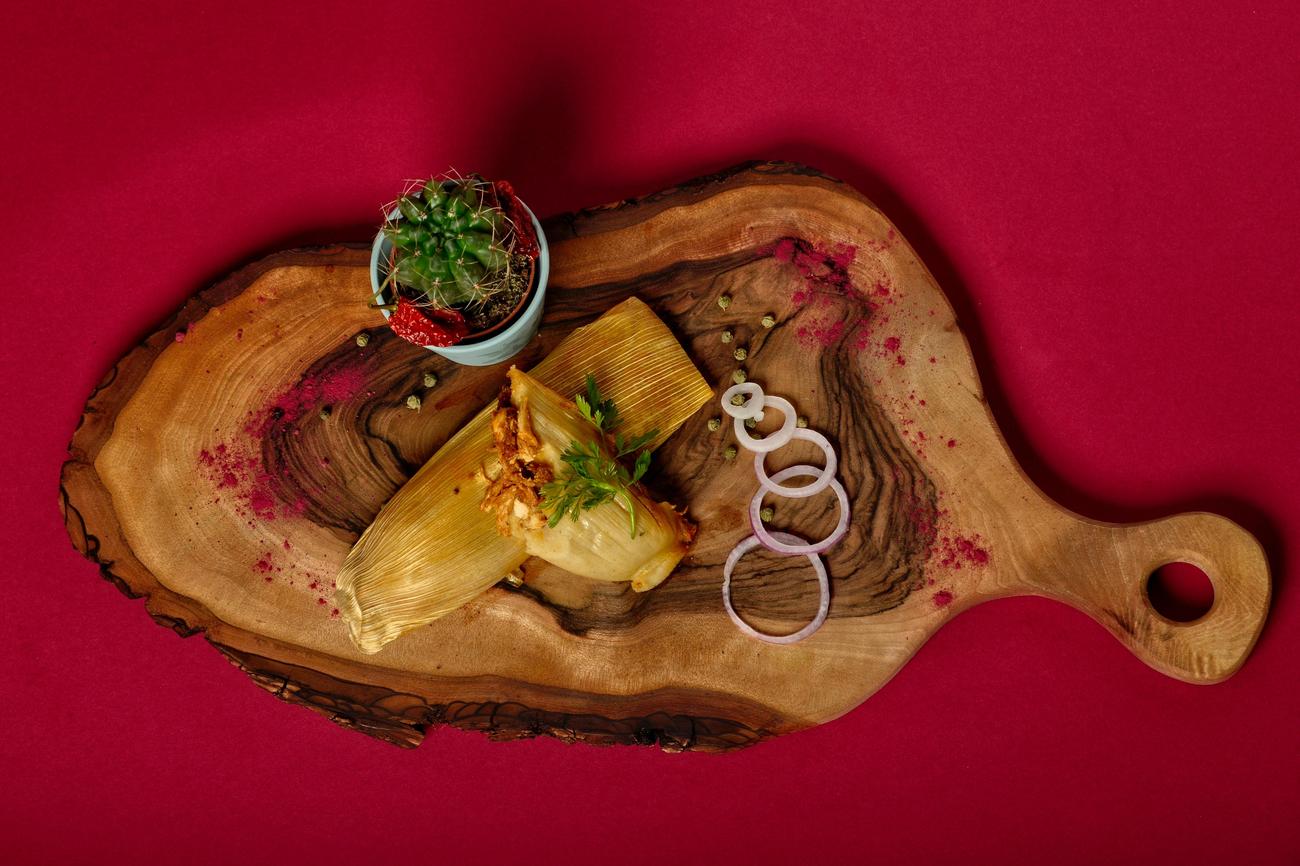Get ready to dive into the delicious history of a beloved Mesoamerican dish that has stood the test of time and captivated taste buds across the globe. In this article, we’ll be unraveling the intriguing tale of tamales – a culinary tradition steeped in ancient origins and cultural significance. So, sit tight as we journey through time and discover the fascinating facts behind the tamale phenomenon. From its humble beginnings to its rise as a culinary icon, prepare to be amazed by the rich history that resides within each fluffy, flavorful bite.

Fascinating Facts About Tamales
Tamales, the beloved Mesoamerican dish, hold a rich history and cultural significance that dates back centuries. Dive into the world of tamales as we uncover some quirky tidbits that will leave you hungry for more!
1. A Journey to Ancient Times
Tamales have been enchanting taste buds since ancient Mesoamerican civilizations. Believe it or not, these scrumptious treats have been enjoyed since as early as 8000 to 5000 BC! Picture that, a culinary tradition spanning thousands of years. Isn’t it remarkable?
2. The Wrapped Wonder
Ever wonder why they’re called tamales? Well, it all stems from the Nahuatl word “tamalli,” which means wrapped. This perfectly captures the essence of this dish, as tamales are traditionally made by wrapping a delightful corn dough in corn husks or banana leaves. Each tamale is like a delicious present, waiting to be unwrapped and savored.
3. Endless Flavors and Fillings
Tamales are not just limited to one flavor or filling. They are incredibly versatile and offer a wide range of options to tantalize your taste buds. From succulent chicken and juicy beef to savory pork, melty cheese, and even vibrant vegetable fillings, tamales fulfill every culinary desire. It’s like a culinary adventure in every bite.
“Tamales are like tiny packages of flavor, each one offering a surprise waiting to be discovered.”
4. Street Food Delight
When hunger strikes, look no further than the vibrant streets of Mexico, where the aroma of tamales lures you in. Tamales hold a special place in street food culture, and street vendors take pride in their craft. Picture yourself, standing on a bustling street corner, biting into a warm tamale that’s bursting with flavors. It’s an experience you won’t forget.
5. A Snack Worth Sharing
Tamales are more than just a meal; they are an invitation to connect with others. These delightful treats are often enjoyed as a snack, perfect for sharing with friends and family. And the best part? Tamales bring people together. Whether it’s a family gathering or a festive celebration, tamales add an extra touch of joy and togetherness to any occasion.
“Tamales foster a sense of community, where sharing a bite creates lasting memories.”
Discovering the quirky tidbits about tamales is like peeling back layers of flavor. The more you unravel, the more you’ll appreciate the rich history and cultural significance of this beloved Mesoamerican dish. So, next time you bite into a tantalizing tamale, remember the fascinating facts that make it even more special.
Facts About Tamales
Tamales have a rich history and deep cultural significance in Mexico. These delicious treats are made from masa, a dough made from ground corn, and filled with various ingredients, such as meats, cheeses, and vegetables. When it comes to tamales, there are some fascinating facts that you may not know. For instance, did you know that tamales have been enjoyed in Mexico for thousands of years, dating back to the time of the Aztecs? They were not only a staple food but also used as portable meals for warriors and travelers. If you’re interested in learning more about the history of tamales or how to make them yourself, check out our article on “Facts About Tamales in Mexico.” You’ll find all the information you need, from traditional recipes to the ingredients that make these treats so special. Don’t miss out on discovering the amazing world of tamales!
Tamales Recipe
Have you ever tasted the heavenly delight that is a tamale? If not, you’re missing out on a true culinary masterpiece. Tamales are a traditional Mexican dish that are made with love and care, using a special recipe that has been passed down through generations. These tasty treats are made by wrapping a corn-based dough around a savory filling, such as meats, cheeses, or vegetables, and then steaming them to perfection. If you’re ready to indulge your taste buds in this Mexican delight, why not try making your own tamales at home? We have the perfect recipe for you to follow. Check out our “Tamales Recipe” article for detailed instructions on how to create these mouthwatering treats. Get ready to savor the flavors of Mexico and impress your friends and family with your culinary skills!
Facts About Quesadillas
Quesadillas are another beloved Mexican dish that has captured the hearts (and taste buds) of people all over the world. These cheesy, gooey delights are made by placing a filling, typically cheese, between two tortillas and then grilling or frying them to perfection. While quesadillas may seem like a simple dish, there are some fascinating facts that you may not know about them. For example, did you know that quesadillas have been enjoyed in Mexico for centuries, with different regions adding their own unique twists to the recipe? If you’re curious to learn more about the history and variations of quesadillas, check out our article on “Facts About Quesadillas.” You’ll be surprised by how much there is to know about this beloved Mexican treat!
Tamales Ingredients
If you’re a fan of tamales, you already know just how delicious these Mexican treats can be. These little bundles of joy are filled with a variety of mouthwatering ingredients that make them truly irresistible. From succulent meats to flavorful cheeses and vibrant vegetables, there’s a tamale filling for everyone’s taste buds. But have you ever wondered what goes into making the perfect tamale? If so, look no further. Our article on “Tamales Ingredients” will provide you with a comprehensive list of the ingredients needed to create these delightful treats. From the essential masa to the creative array of fillings, you’ll discover all the must-have components for the ultimate tamale experience. Get ready to embark on a culinary adventure and dive into the world of tamale ingredients!
History Of Tamales
The history of tamales stretches back thousands of years, making them one of the oldest known dishes in the world. These delectable Mexican treats have a fascinating past and have been enjoyed in various forms by different cultures throughout history. From ancient civilizations like the Aztecs and Mayans to the modern-day culinary landscape, tamales have stood the test of time. If you’re intrigued by the story behind these beloved treats, our article on the “History Of Tamales” is a must-read. Discover how tamales evolved over centuries, how they became an integral part of Mexican culture, and why they continue to captivate food lovers worldwide. Join us on a journey through time as we explore the rich and flavorful history of tamales!
Native American Tamales Recipe
While tamales are often associated with Mexican cuisine, they actually have deep roots in Native American culture as well. Native peoples across North and South America have been enjoying tamales for thousands of years, each region adding its own unique flavors and preparations. If you’re interested in exploring the Native American influence on tamales, we have the perfect recipe for you. Our “Native American Tamales Recipe” article will guide you through the steps of creating these traditional treats, incorporating indigenous ingredients and techniques. Immerse yourself in the flavors and history of Native American culture as you prepare and savor these authentic tamales. Let the ancient traditions come alive in your kitchen and delight your taste buds with every bite!
Ancient Origins
Tamales, the beloved traditional Mexican dish, have a fascinating history that stretches back thousands of years. These delightful masa-filled parcels have been enjoyed since ancient times, with origins dating as far back as 8000 to 5000 BC in Mesoamerica. Imagine, even our ancient counterparts couldn’t resist the allure of tamales!
The very word “tamale” has its roots in the Nahuatl language, spoken by the Aztecs. In Nahuatl, “tamalli” means “wrapped,” which perfectly encapsulates the essence of this culinary delight. So next time you unwrap a tasty tamale, remember that you’re partaking in a tradition that spans centuries.
Our journey into the ancient origins of tamales leads us to the Olmecs, an ancient civilization in present-day Mexico. These innovative cooks were the first to experiment with this divine creation. Picture them laboring over a hot fire, burying the tamales in hot ashes to create an extra crispy and brown exterior. The Olmecs truly planted the seed that would grow into the magnificent world of tamales we know today.
As time went on, tamales evolved and spread throughout Mexico and Latin America. They traveled far and wide, capturing the hearts and stomachs of many. Tamales are now an integral part of Mexican cuisine and even hold cultural and historical significance. They’ve become a symbol of Mexican nationalism, embodying the deep-rooted traditions of this vibrant culture.
Through the centuries, tamales have grown in popularity and variety. From the early Olmec creations to the present day, countless flavors and fillings have been crafted to tantalize our taste buds. Whether it’s succulent chicken, tender beef, savory pork, creamy cheese, or a medley of delightful vegetables, there’s a tamale for every palate.
But tamales are more than just a meal. They bring people together. Picture a bustling street in Mexico, lined with proud vendors skillfully crafting their tamales. The aroma permeates the air, drawing locals and tourists alike to experience the communal joy that comes with these scrumptious treats. Tamales foster a sense of community, bringing friends and family together to celebrate and share in the simple pleasure of good food.
As we delve deeper into their history, it’s clear that tamales have left an indelible mark on Mexican culture and gastronomy. They are not just a dish; they are an experience, an ode to tradition and an homage to the rich tapestry of Mexico’s culinary heritage.
So the next time you savor a hot, steaming tamale, take a moment to appreciate the ancient origins that brought this delectable delight to your plate. Let the flavors transport you through time to the vibrant and diverse world of Mesoamerica, where the love for tamales first sprouted.
“Tamales, the time-traveling delicacies that connect us to ancient Mesoamerica.”
History of the Tamale
Tamales, those delicious bundles of goodness wrapped in corn husks or banana leaves, hold a captivating history that stretches back thousands of years. Let’s embark on a journey to uncover the fascinating facts behind these beloved Mesoamerican delicacies.
Ancient Origins and Aztec Influence
The story of tamales begins in ancient Mesoamerica, with evidence suggesting they were enjoyed as early as 8000 to 5000 BC. The Aztecs, one of the prominent civilizations of the time, played a significant role in shaping the history of tamales. The term “tamalli” in Nahuatl, the language of the Aztecs, means “wrapped,” which is where the name tamale comes from[^1^].
Did you know? Tamales have been enjoyed since ancient Mesoamerican civilizations, with a history dating back to as early as 8000 to 5000 BC[^1^].
Evolution and Spread
From their humble beginnings, tamales gradually evolved and spread throughout Mexico and Latin America. The Olmecs, an ancient civilization in Mexico, were among the first to experiment with tamales by burying them in hot ashes, resulting in a crispy exterior. This technique soon caught on, and the art of tamale-making continued to evolve across various regions[^2^].
Quirky tidbit: The Olmecs, an ancient civilization in Mexico, pioneered the burying-in-hot-ashes technique to create crispy tamales[^2^].
Cultural Significance and Culinary Heritage
Tamales have become an integral part of Mexican cuisine, holding deep cultural significance. They have transcended mere sustenance and have become intertwined with ceremonies, rituals, fiestas, and family feasts. Savoring a tamale is not just about satisfying hunger; it is an experience that brings people together, fostering a sense of community and celebration[^3^].
Take note: Tamales are not just a meal but also a snack meant to be shared with friends and family, fostering a sense of community and togetherness[^3^].
Mouthwatering Variety
One of the most delightful aspects of tamales is the sheer variety of flavors and fillings that can be found across different regions. Whether it’s succulent chicken, savory beef, juicy pork, gooey cheese, or a medley of vibrant vegetables, there’s a tamale for every palate. The possibilities are endless, and each variation adds its own unique spin to the culinary tapestry of tamales[^4^].
Fun fact: Tamales come in endless flavors and fillings, including chicken, beef, pork, cheese, and various vegetables[^4^].
A Journey Through Time
When you bite into a tamale, you’re not just tasting an exquisite dish but also connecting with the ancient origins and vibrant world of Mesoamerica. This humble food is a testament to the rich history and culinary ingenuity of the Aztecs, Mayans, and Incans. It has stood the test of time, leaving an indelible mark on Mexican culture and gastronomy, representing tradition and heritage[^5^].
Key takeaway: Savoring a tamale allows us to connect with the ancient origins and vibrant world of Mesoamerica[^5^].
In conclusion, the history of tamales is a captivating tale that takes us back thousands of years to the heart of Mesoamerica. From the Aztecs to present-day Mexican cuisine, these little bundles of joy have continued to charm and delight generations. So, the next time you indulge in a tamale, remember the rich history and cultural significance it carries.

FAQ
Question 1: What is the origin of tamales?
Answer 1: Tamales have been around for centuries, originating in Mesoamerica as early as 8000 to 5000 BC.
Question 2: What does the word “tamale” mean?
Answer 2: The word “tamale” comes from the Nahuatl word “tamalli,” which means wrapped.
Question 3: How are tamales traditionally made?
Answer 3: Tamales are traditionally made by steaming corn dough wrapped in corn husks or banana leaves.
Question 4: What fillings can be used for tamales?
Answer 4: Tamales can be made with various fillings, including chicken, beef, pork, cheese, and vegetables.
Question 5: Where are tamales commonly sold?
Answer 5: Tamales are often sold by street vendors and are a popular snack food.
- Mastering Leader in Spanish: The Complete Guide - April 19, 2025
- Uncovering Surprising Parallels: England Size Compared to US States - April 19, 2025
- Old Mexico Map: Border Shifts 1821-1857 - April 19, 2025
















